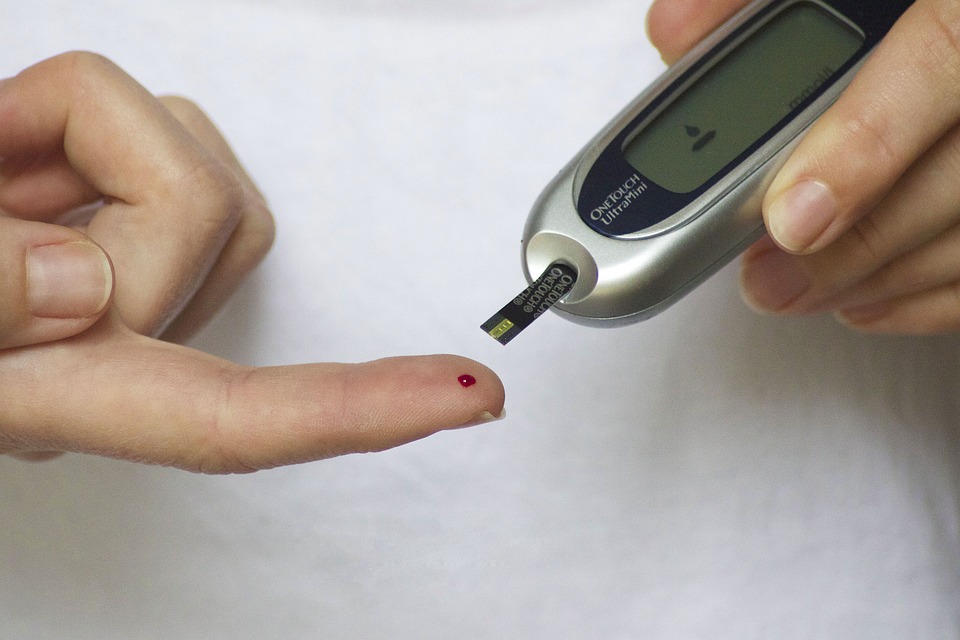
Exercise is a powerful ally in diabetes management. It boosts your insulin sensitivity, making your muscles absorb glucose more efficiently and reducing insulin resistance. Regular workouts, like brisk walking or resistance training, can decrease HbA1c levels and improve blood sugar control. Aerobic exercises enhance cardiovascular health, cutting heart disease risk considerably. Plus, you’ll improve your body composition, aiding in weight management which is essential for managing diabetes. Exercise also benefits mental health, lowering anxiety and depression risks. By incorporating exercise into your routine, you not only manage diabetes better but also promote overall well-being and future wellness. Discover more ways to harness its power!
Blood Sugar Control
Exercise plays a pivotal role in managing blood sugar control, particularly for those dealing with diabetes. By increasing insulin sensitivity, exercise empowers your muscle cells to better utilize available insulin, helping absorb glucose efficiently. This can begin right as you engage in physical activity and continue long after. Additionally, exercise improves overall energy, reducing fatigue which can often be a barrier to maintaining consistent physical activity routines.
Did you know that different exercise types, such as aerobic, resistance, or a combination, have similar impacts on lowering HbA1c levels? Regular physical activity also promotes cardiovascular health by reducing heart disease risk, adding even more reason to embrace various exercise forms. Embracing various exercise forms allows you the freedom to choose what invigorates you, all while maintaining improved glucose levels.
Blood glucose monitoring becomes your ally when maneuvering these changes. Checking your glucose before, during, and after exercise helps guarantee you’re safely thriving in this liberated lifestyle. Knowing when to adjust your activities or carbohydrate intake helps you avoid hypoglycemia, which can occur with exercise.
With regular physical activity, your body’s enhanced insulin sensitivity can persist for up to 24 hours, making glucose management not only achievable but empowering. This continuous cycle of movement and mindful monitoring sets you up to break free from the constraints of diabetes, letting you take charge of your health and future.
Cardiovascular Benefits
Engaging in regular aerobic activity markedly boosts cardiovascular fitness, enhancing VO2max and cardiac output. For those living with diabetes, this rise in cardiovascular fitness is a powerful ally against heart disease. By consistently hitting the pavement or pedaling away for at least two hours a week, you dramatically lower your risk of succumbing to heart disease compared to those who remain inactive. Dancing through life with four hours of moderate to vigorous exercise weekly can arm women with a staggering 40% reduction in their heart disease risk. It’s not just your heart that benefits—your blood vessels join the celebration. Aerobic workouts enhance vascular health by improving blood vessel compliance and reactivity. This kind of exercise also dials down low-grade inflammation and boosts endothelial function, paving the way for healthier blood vessels and decreased risks of complications like diabetic kidney disease and retinopathy. High-intensity interval training (HIIT) can supercharge these effects, further improving lipid levels and maintaining glycemic control. Additionally, regular physical activity is essential for managing weight, as it helps maintain a healthy balance between calorie intake and expenditure, reducing the risk of obesity-related complications. Immerse yourself in aerobic and resistance training, and witness a unique synergy that curbs blood pressure, lowers LDL cholesterol and triglycerides, creating an extensive defense against cardiovascular adversities. Regular physical activity not only contributes to lower cardiovascular and overall mortality risks in diabetes, but it also enhances glycemic control by reducing A1C levels. Embrace exercise, and liberate your heart.
Enhanced Insulin Sensitivity

While strengthening your cardiovascular system, it’s equally important to amplify your body’s insulin sensitivity. Embracing the right exercise types can spark metabolic adaptations that liberate you from the shackles of insulin resistance. Here’s a roadmap to elevate your journey:
- Aerobic Exercise: Activities like brisk walking or cycling improve your body’s ability to use glucose efficiently, boosting insulin sensitivity. Thirty minutes of moderate aerobic exercise, three times a week, has shown significant improvement in insulin sensitivity, according to studies. It’s a straightforward way to reclaim control over your metabolic health. Taking breaks throughout the day to engage in short runs or brisk walks can also make a difference, as short, fast runs increase calorie expenditure and contribute to improved insulin sensitivity.
- Resistance Training: By incorporating resistance exercises, you’ll greatly enhance your insulin sensitivity, especially if you’re dealing with extra weight. This empowering change doesn’t even depend on altering your body composition, making it an accessible path of transformation.
- High-Intensity Interval Training (HIIT): For the time-strapped, HIIT offers powerful benefits. It’s a shortcut to boosting whole-body insulin sensitivity, making the most out of your limited minutes.
Beyond single sessions, consistent engagement in these exercises reshapes your muscles, facilitating glucose uptake without relying on insulin—a liberation that can last for days post-workout.
Regularly practicing these regimens not only reduces insulin resistance but also shields you from metabolic syndrome, paving the path to sustained wellness and freedom.
Improved Insulin Action
When it comes to improving insulin action, the magic happens both during and after your workouts. Imagine each session of acute exercise as a key releasing your muscles’ ability to grab glucose without insulin’s help. This incredible shift boosts glucose uptake up to fivefold, and these results aren’t just fleeting—they hang around for hours, letting your body enjoy improved insulin action for up to 48 hours post-exercise. Even short bursts of high-intensity workouts can keep insulin action finely tuned for a day. Regular physical activity leads to improvements in carbohydrate and lipid metabolism, enhancing your body’s overall metabolic health. Mindful eating practices, such as eating slowly and savoring meals, can complement the benefits of exercise, promoting satisfaction and helping regulate glucose levels more effectively. Now, weave this magic into your lifestyle for chronic adaptations. With regular training, your body’s entire metabolic framework transforms. Your muscle’s capillary density heightens, oxidative capacities expand, and insulin signaling kicks into high gear. The secret lies in consistency—exercise as a regular commitment amplifies insulin sensitivity even if you’re just starting or struggling with insulin resistance. These adaptations, especially potent with combined aerobic and resistance training, mean freedom from the grip of glucose fluctuations. Incorporating exercise as your ally opens a pathway to a liberated lifestyle, enhancing your control over diabetes management and leading you toward lasting health and wellness.
Effective Weight Management

Achieving effective weight management is essential for enhancing overall health and controlling diabetes. Shedding just 5% to 10% of your body weight can markedly improve blood sugar management and well-being. Even more liberating, a 7% to 10% weight loss slashes the risk of developing type 2 diabetes by nearly 60%. Imagine the freedom of reduced diabetes medication, increased energy, and better sleep!
Integrating exercise into your routine can supercharge these benefits. Engaging with a registered dietitian or diabetes educator can provide personalized guidance to help you achieve your goals. Aim for at least 150 minutes of moderate activity or 75 minutes of vigorous activity each week, and don’t forget about the power of two days of strength training. Incorporating high-intensity interval training into your exercise regimen can enhance fat burning and aid in more effective weight management.
To empower your weight loss journey, focus on sustainable lifestyle changes. Embrace healthy habits by crafting a diet you can stick with long-term.
Consider these powerful strategies:
- Opt for higher-protein, lower-carb meals to curb hunger and control blood sugar.
- Choose fiber-rich, low-sugar carbs like beans and sweet potatoes.
- Swap sugary drinks for water to reduce calorie intake and stabilize blood sugar.
Muscle Strength and Tone
Incorporating strength training into your routine builds on the benefits of weight management by enhancing muscle strength and tone. It’s a powerful ally in your journey toward better diabetes management. By participating in regular resistance exercises, your muscles learn to process glucose more efficiently. This improvement in insulin sensitivity allows your body to absorb glucose with less effort, reducing the need for excess insulin. Plus, the muscle recovery process post-exercise keeps these benefits active for up to 24 hours, offering you a sustained advantage in glucose management.
When you engage in exercises like squats and lunges, you not only build muscle but also initiate a path of strength progression. For those with type 2 diabetes, regular strength training can improve overall health by strengthening bones and lowering blood pressure. Each session contributes to maintaining muscle mass, which naturally declines with age. Increasing your muscle mass means your body burns glucose more effectively, helping you manage your blood sugar levels.
For those with type 2 diabetes or prediabetes, this translates to fewer blood sugar spikes. Beyond regulating glucose, you’re reducing your risk of chronic conditions like heart disease. It’s about liberating yourself from the constraints that diabetes tries to impose and embracing a life of strength and resilience.
Boosted Mental Health

With regular physical activity, you can considerably boost your mental health, helping to reduce stress and anxiety. Delving into the liberating effects of exercise, a strong mind-body connection serves as your guiding force.
Exercise can release endorphins and serotonin, hormones that lift your spirits and ignite emotional resilience. Aerobic exercises, such as running or cycling, refine your body’s stress response, while resistance training, like weightlifting, pushes anxiety to the sidelines.
Mind-body practices like yoga and mindfulness continue to break anxiety chains, especially in adults with type 2 diabetes.
To elevate your mental well-being, keep in mind these core benefits of regular physical activity:
- Improved Mood: Exercise acts as a powerful mood enhancer, sometimes rivaling the effects of medication for mild depression. Tracking mood changes by using a simple 0 to 10 scale before and after workouts helps you witness your emotional leaps.
- Lowered Risk of Depression: Regular activity can reduce depression by up to threefold, critical for those managing diabetes. Mind-body training reveals a pathway toward mental liberation.
- Enhanced Mental Health Management: Integrating exercise into lifestyle changes supports therapy and medication, fostering stress release and nurturing sleep patterns for overall holistic wellness.
Increased Overall Fitness
As your mental health flourishes with regular exercise, your physical fitness gains can’t be overlooked. Infusing your life with aerobic benefits and resistance advantages opens up a new level of freedom over diabetes management.
By embracing aerobic activities like brisk walking, swimming, or cycling, you elevate mitochondrial density and insulin sensitivity. Your heart gets stronger, boosting cardiac output, while oxidative enzymes help fend off the drawbacks of diabetes. Even low-intensity aerobic exercise can usher you into a liberated state with improved insulin action and cardiovascular fitness.
Resistance training doesn’t just tone muscles; it amplifies your power to control blood sugar. By increasing muscle mass, you’re offering your body a better means to regulate glucose levels. Regular resistance workouts, from body weight exercises to free weights, enhance muscle insulin sensitivity by about 50%.
When you blend aerobic routines with resistance exercises, you optimize muscle strength and glycemic control, giving you a distinct edge over diabetes.
This dual approach not only elevates your physical function but also primes your body to thrive in a state of balance, lowering triglycerides and managing blood pressure.
Embrace the autonomy that increased overall fitness provides.
Specific Exercise Guidelines

Addressing specific exercise guidelines is essential to managing diabetes effectively. Embrace your freedom to choose exercise types that fit your lifestyle and goals. Variety provides empowerment and guarantees you stay engaged.
Make it a mission to incorporate these powerful activities into your weekly routine:
1. Aerobic Exercise: Try brisk walking, cycling, or swimming for at least 150 minutes a week. Aim for sessions lasting 30 minutes, five days a week, to harness benefits like improved insulin sensitivity and cardiovascular fitness.
Shorter 10-minute intervals are perfect stepping stones toward liberation from sedentary habits.
2. Resistance Training: Integrate strength-training exercises, such as weight lifting or resistance bands, two to three times per week, taking a rest day between sessions. This approach not only builds muscle strength and bone density but also grants you improved glycemic control.
3. Interval and High-Intensity Training: For those who crave intensity, interval training and HIIT offer efficient pathways to enhanced insulin action and cardiovascular fitness. Exercise at near-maximal effort intermittently for shorter bursts, but make sure you consult a healthcare provider before diving in.
These exercises, spread across a well-balanced training frequency, are your allies on a journey towards improved diabetes management and personal liberation.
Long-term Health Benefits
Embracing regular exercise as part of your diabetes management plan delivers extensive long-term health benefits. It boosts cardiovascular wellness by lowering blood pressure and reducing harmful LDL cholesterol and triglycerides, while increasing healthy HDL cholesterol levels.
Imagine cutting your heart disease risk by 40% through moderate to vigorous exercise. That’s the potential liberation exercise can bring, reducing cardiovascular and overall mortality in both type 1 and type 2 diabetes.
Long term wellness isn’t just about your heart; it’s about strengthening muscles and bones too. Exercise enhances muscle capillary density, oxidative capacity, and lipid metabolism, promoting healthier liver and pancreas functions.
Sustainable habits such as these can improve muscle insulin sensitivity and physical mobility without needing weight loss, ensuring a longer, active life.
Moreover, regular exercise improves lung and immune function, boosts overall well-being, and contributes to better body composition. It offers a pathway to reduced anxiety and improved cardiac output, making your life not just longer, but more vibrant.
Long-term, you can also enjoy financial freedom with lower healthcare costs, thanks to significant health improvements from consistent activity. By prioritizing these sustainable habits, you’re investing in a liberated, healthier future.
Improves Insulin Sensitivity Effectively

Regular physical activity serves as a powerful tool in enhancing insulin sensitivity, offering solutions for both healthy individuals and those managing conditions such as type 2 diabetes, prediabetes, PCOS, or obesity. Through various forms of exercise, including aerobic, resistance, and high-intensity interval training (HIIT), the body’s efficiency in managing glucose is considerably improved. Moderate intensity exercise alone can ramp up glucose uptake by over 40%, amplifying skeletal muscle insulin sensitivity via increased microvascular perfusion and beneficial molecular signaling.
Remarkable benefits occur regardless of changes in body composition, as seen in resistance training’s impact on overweight populations. The effect of a single exercise session, while impactful, generally lasts up to 72 hours, underscoring the importance of regular activity in maintaining its benefits.
The myriad mechanisms underlying improved insulin sensitivity through exercise involve both insulin-dependent and independent pathways, boosted microvascular perfusion, and enhanced molecular signaling within muscle tissues. This physiological symphony results not only in more effective glucose uptake and use but also in mitigated release of detrimental free fatty acids and pro-inflammatory cytokines.
The cerebral impact of exercise also plays a crucial role, improving insulin signaling within the brain areas linked to hunger and satiety, which ultimately aids in reducing obesity and abdominal fat. Large-scale, population-specific benefits have been observed as well, with consistent physical activity lowering the risk of insulin resistance, metabolic syndrome, and type 2 diabetes, and supporting cardiovascular health.














